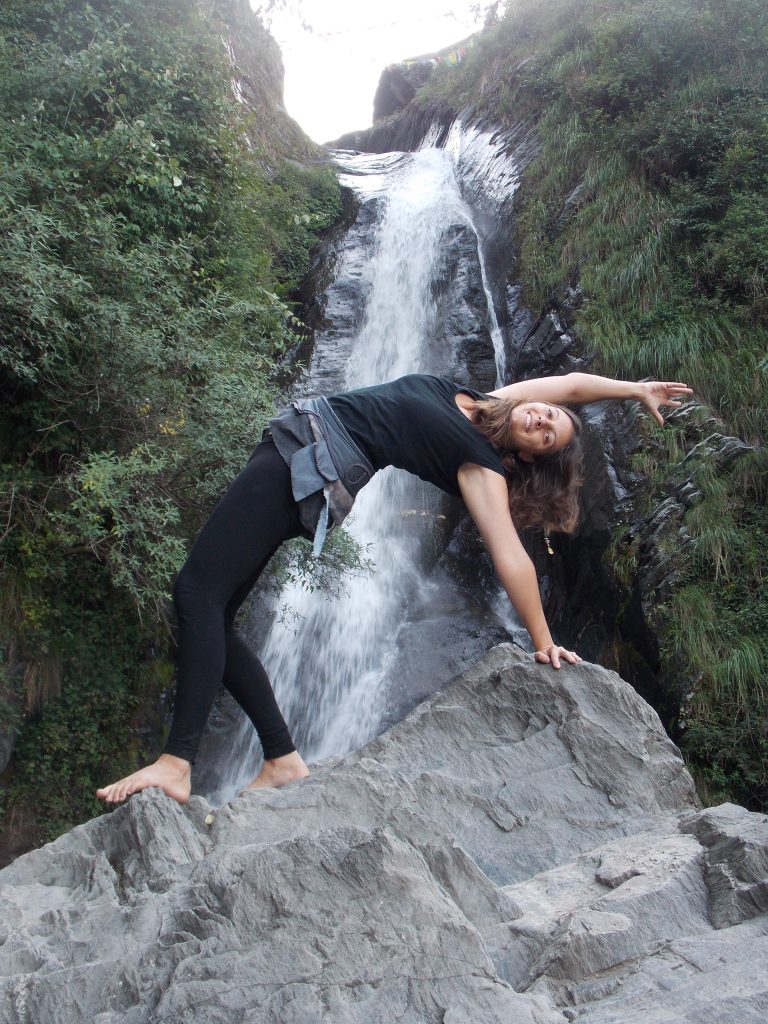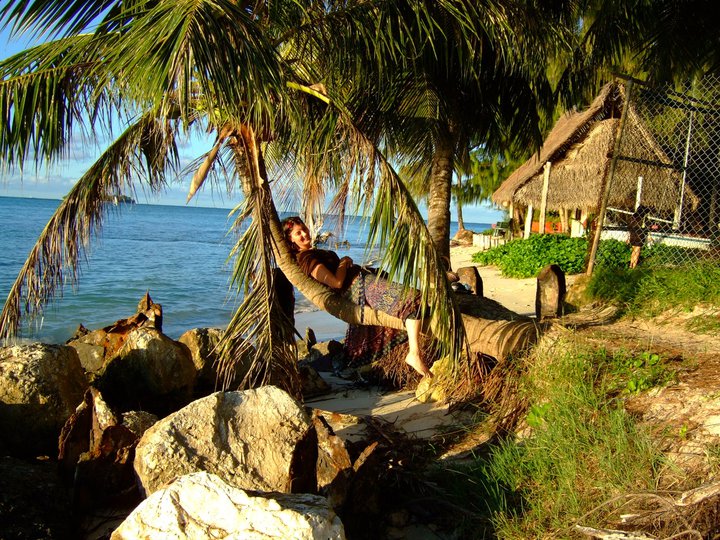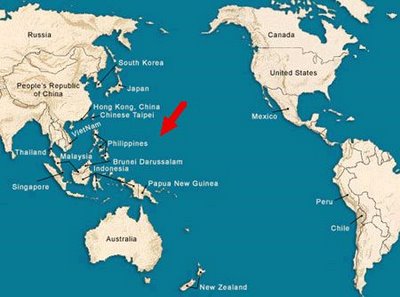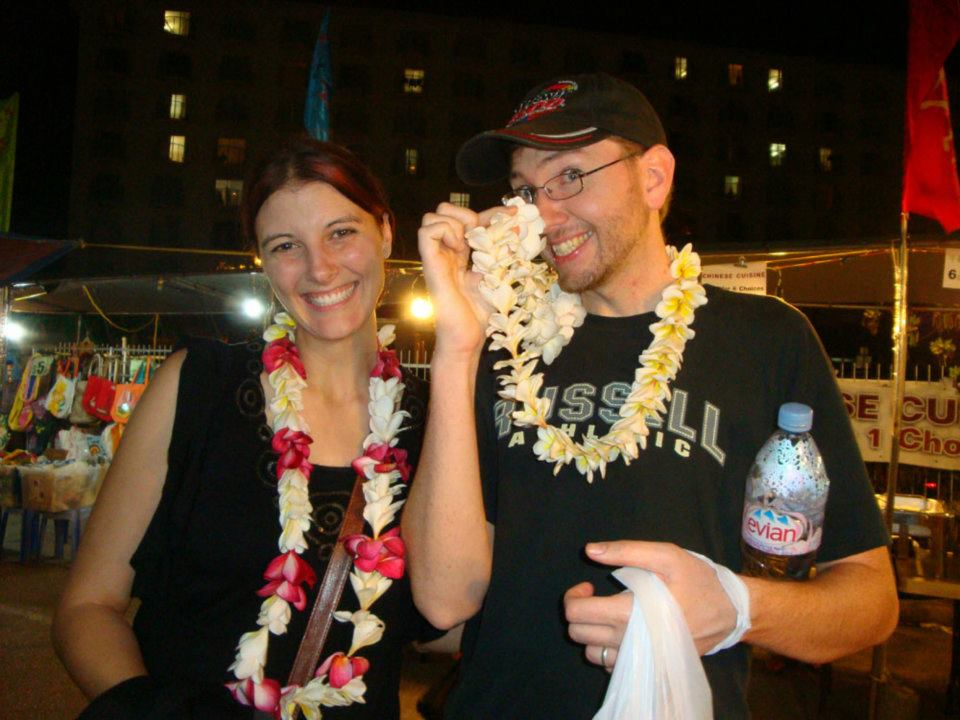
This week I get to share with you one of the most interesting Dietitian Spotlight Interviews I’ve ever done! Kate Campbell, RD, CLT, RYT is a dietitian with Commonwealth Healthcare Corp on the small island of Saipan (A US commonwealth near Guam, population around 50,000).
 Kate was hired to “fix” the dietary department of a hospital after over 5 years with no dietitian. When she arrived, everything was in disarray and the current systems were obsolete and incomplete. She’s fought an uphill battle for the last 3 years working with a lack of funds, lack of supplies (bad storms mean ships cant drop off cargo and flooding farms leave few food options), lack of staff, lack of training, and many cultural barriers. And that’s not Kate’s only job! A few months ago, she opened Hatha Adai Yoga studio on the island with two friends as part of an effort to improve health and wellness in a place that has one of the highest obesity and diabetes rates in the US and it’s territories.
Kate was hired to “fix” the dietary department of a hospital after over 5 years with no dietitian. When she arrived, everything was in disarray and the current systems were obsolete and incomplete. She’s fought an uphill battle for the last 3 years working with a lack of funds, lack of supplies (bad storms mean ships cant drop off cargo and flooding farms leave few food options), lack of staff, lack of training, and many cultural barriers. And that’s not Kate’s only job! A few months ago, she opened Hatha Adai Yoga studio on the island with two friends as part of an effort to improve health and wellness in a place that has one of the highest obesity and diabetes rates in the US and it’s territories.
Kate went through the University of Cincinnati for her undergrad, completed her internship at The Ohio State University in 2006 and became a Registered Dietitian (RD) shortly thereafter. Last summer, she spent 6 weeks in India training to become a yoga teacher (RYT), in hopes of incorporating Yoga Therapy techniques into her career.
After her internship, Kate went to work for WIC (Women, Infants and Children) and through the WIC National emailing list, she heard about the need for a Clinic Manager at the WIC office on the remote tropical island of Saipan. While that was the initial job she applied for, she instead was offered and then accepted a job with Saipan’s 86-bed hospital, which had been without a dietitian for over 5 years. Kate will be celebrating 3 years of living and working in Saipan this February.
Kate, what made you first consider taking a job overseas?
Adventure, and seeing a need! I have always loved to travel, see new cultures, and the idea of living a simpler life. It was nice to get away from the fast-paced city life of the big city and move somewhere that was grateful for the help. And of course the added perk that I am never more than 2.5 miles away from the ocean.

What’s a typical workday like for you?
In the last few months, things have settled into what I imagine is pretty similar to a state-side hospital routine. I use the morning to check on new admissions, check on nutrition screens and consults, and double check that diet orders were correctly sent to the kitchen. Then it’s time to see patients! While there are a fair share of patients needing calculations for tube feeds or TPN as well as working with infant feeds, the bulk of my time is spent doing education for diabetes, kidney failure, and wound healing.
The first two years, however, were a bit different! They were filled with fixing the kitchen: from training staff on food safety to getting obsolete equipment fixed or replaced, updating menus, and writing the Policy & Procedure manual. Then it was on to the clinical side: creating nutrition screening forms and training the nursing staff on completing them; working to get supplemental drinks and powders ordered for patient use; and again writing more policies.
What are some of the big differences in being an RD in Saipan vs. the US?
I think having to “think outside the box” happens a lot. Resources are scarce, and often shipments are delayed. We’ve had to do a lot of quick thinking on how to rig breaking equipment, what to feed patients when stores run out of food, and how to use PEG tubes when we cannot afford standard formulas. For PEGs, we use food-based recipes, cooking and preparing them in-house, and teaching caregivers how to do the same once home, as families cannot afford expensive formulas.
It can also be tricky learning the multiple different names for a single food, based on which culture you are working with. We have a diverse population, including Japanese, Korean, Chinese, Bangladesh, Chamorro, Chuukese, Yapese, Filipino, Carolinian, and more! And they all have their own food culture, and names for common food items.

Are there other RDs working on the island?
When I moved here, there were only 2 other RDs, one working with WIC and one with the Public Schools. In the last few months, we have happily taken on 2 more! One who is helping me at the hospital, and the other will tackle our 114-patient dialysis center. The dietitian with WIC is a local woman who went to the states for school and returned after completing her registration exam, but the rest of us are from the states.
Do you have anyone working under you?
When I was fixing up the kitchen, I was in charge of the 5 kitchen staff; but we have since hired a Kitchen Manager to take on that role so I could focus on the clinical side of things. Now I help with the kitchen and get the new clinical dietitian up to speed, but I am not officially over anyone – and I prefer it that way!
What’s been your biggest challenge to date in your career?
Having come from an internship and undergrad program with a focus on public health and community education, I would definitely say tackling the role of a Hospital Clinical and Food Service dietitian was the hardest thing! No one on island knew what I should be doing, and my boss essentially said “do whatever you want – I just know that CMS (Center for Medicare and Medicaid Services) says we need a dietitian to fix our Dietary department” – it was terrifying! I was trying to re-teach myself clinical and food service nutrition after 6 years of being out of school and had only the two other RDs on island who didn’t have any strong knowledge in those areas either. Thank God for the different DPGs through the Academy! I relied on them DAILY to help get up to speed and find resources to re-teach myself! But it has also been the most rewarding thing I’ve done, knowing that I helped fix an Immediate Jeopardy issue with CMS, and have been slowly and steadily pulling our hospital back into compliance.
How different are the food customs of Saipan compared to the US?
Oh so varied! The staples here are white rice and Spam, with a good dosing of soy sauce, Ajinomoto/MSG, and mayonnaise. These foods are consumed on a daily basis, often several meals each day. Salt is also a snack. Yes, straight salt. Sometimes flavored with Kool-aid powder. My teacher friends say they are constantly catching kids with handfuls of this, and reminding them they’re not supposed to have any foods or snacks during class (if you can consider and handful of salt a “food”!)
And parties are HUGE! They load your plate up multiple times, and people are expected to bring empty containers with which to take home even more. And sadly, there is a lot of peer pressure to NOT make healthy choices. Patients and friends alike have told me they get mocked, (“what? Do you think you’re a white person?”) or chastised (“why are you turning your back on your culture?”) if they try to limit portion sizes, opt for vegetables, pass on the fatty meats, or begin walking or exercising.
Are there any foods that you miss dearly that you can’t wait to eat when you come for a visit?
Chipotle! That is the number one restaurant I miss! Thankfully, my husband found a website with recipes that imitate Chipotle. They are time consuming, but they are worth it once in a while!
Other than that, I dearly miss the abundance of fresh, organic, varied produce I could get at stores like Whole Foods or Kroger Superstores. It’s a common misconception that we have abundant produce. We have some variety, but not nearly what I had anticipated, and I question the growing conditions and practices as I find many locally grown vegetables to taste quite bitter.

What is your favorite Saipan meal?
Pumpkin curry! I know, sounds gross, and that’s what I thought before I tried it. It is now my favorite, made with local Kabocha pumpkins.
I also love chicken kelaguin – it’s chicken with lime juice, green onion, and coconut shreds. (And other items, depending who makes it)
Soursop is a local fruit that has ousted pineapple as my new favorite fruit, though pineapple is a close second.
How many nights a week do you cook dinner at home?
It varies. I used to cook dinner almost every night, but recently became busy with late-night judo classes, so I rely on the hospital cafeteria to provide some leftovers that I take home those nights. Due to the lack of consistently available ingredients, we find random stir-fry meals, and random veggie soups to be staples. It can get tiring trying to go to 3 or more different stores to find the ingredients you want for a recipe, so you start just doing random mixes of whatever happens to be available that week.
What has been your biggest career accomplishment so far?
Bringing the hospital kitchen closer to CMS compliance! We haven’t had a survey yet to see how our clinical side is doing, but I’m feeling pretty good about it. We still have some things to work on in both areas for sure, but we’ve come a long, long way.
How do you keep current on all of the trending topics and changing science of nutrition?
I am a member of various DPGs and their EMLs. I also get the Journal out here, as well as the Food & Nutrition magazine. Often friends and family will post interesting topics on my Facebook wall, keeping me updated as well as asking for my thoughts.
What do you think needs to be done to further elevate our profession and gain respect in the public eye?
I think the Academy’s relationship with big food companies makes us look bad. I understand that some people feel having dietitians within those companies, pushing for healthy changes, will make a big impact – and maybe it does – but I know that in the public eye, it brings a lot of criticism and causes the Academy – and therefore many dietitians – to lose credibility. When those news articles come out talking about McDonald’s being served at conferences, for example, or listing Academy sponsors, I often have many people bringing it to my attention (in person or via Facebook) in shock, and asking about it, and saying how awful it is, and how can they trust me/dietitians?! I try to educate them, and share both sides of the issue, but the bottom line is, regardless what goes on behind the scenes, we lose credibility in the eyes of the general public because of these ties.
Do you have any advice for someone considering registered dietitian jobs overseas? What resources do you know of for someone looking for a job opportunity like yours?
Eat Right International (eatrightoverseas.org) that has postings for positions overseas. I believe the PeaceCorps does more nutrition work these days than a decade ago, so there may also be some opportunities with them.
I say go for it! It’s an amazing opportunity, and I think everyone – regardless of career – should spend some time away from their normal bubble of life. It is eye opening, and enriching. Just make sure to always have an emergency escape plan!
Thank you Kate for being a part of the Dietitian Spotlight Series! Feel free to contact Kate at kcampbell.rd@gmail.com if you have more questions about her role as an overseas dietitian. Congratulations on all you’ve accomplished in your career so far and for elevating and showing the need for our profession!
